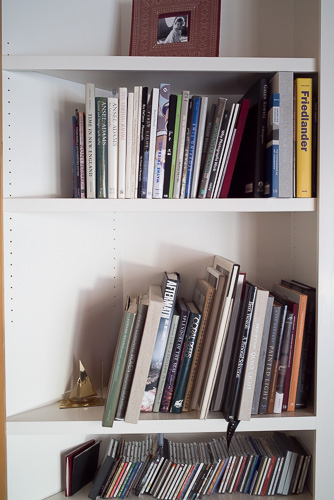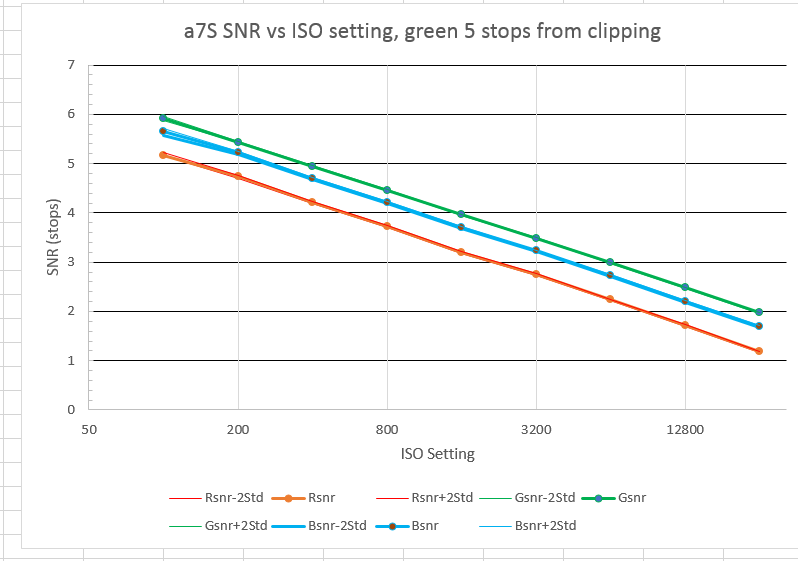A reader wrote in to say that his WATE (aka Leica 16-18-21mm f/4 Tri-Elmar ASPH) had blue corners when used on the Sony a7. I thought I’d try the lens on the a7S. Expodisc shots at 16 mm: No corner casts to speak of. My usual scene at 16mm: The upper right corner: Soft, like… [Read More]
Archives for 2014
High-ISO push processing with the Sony a7S
I ran a similar series of bookcase pictures as the ones I posted earlier today, only with 3 stops higher ISO settings. I put a Zeiss 35 mm f/2 Biogon ZM on the Sony a7S, using a Novoflex adapter. I put the camera on a big RRS carbon fiber tripod. I set the ISO to… [Read More]
Push processing a7S images
When I post flat-as-Kansas corrected SNR vs ISO curves like I did yesterday, I often get emails saying, “That can’t be right. Show me some pictures.” I always oblige. I put a Zeiss 35m mf/2 Biogon ZM on the Sony a7S, using a Novoflex adapter. I put the camera on a big RRS carbon fiber… [Read More]
Is the a7S ISOless?
Measuring read noise is fine, but by the time you can see the read noise, the photon noise is usually pretty bad. In fact, for me, the photon noise is more important as a measure of practical image quality. Here’s a test that shows the combined effects of photon and read noise as a function of… [Read More]
Focus peaking on the a7S
Although I’ve never liked it when the camera’s on a tripod, focus peaking has great potential with the camera handheld. That’s because it offers the chance to focus without zooming in and losing the context of he whole image, a. Also, if it’s sensitive enough, you should be able to focus at the taking aperture,… [Read More]
- « Previous Page
- 1
- …
- 28
- 29
- 30
- 31
- 32
- …
- 62
- Next Page »



